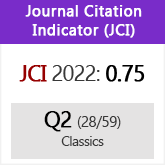Una inscripción honorífica en latín al emperador Joviano por Temistio, praeses de Licia, en Andriace
DOI:
https://doi.org/10.3989/emerita.2023.08.2317Palabras clave:
Andriace, Temistio, Sozómeno, Praeses, Licia, LibanioResumen
Durante las excavaciones arqueológicas en Andriace, el puerto de Myra, se descubrió una inscripción honorífica delante de la estructura del muelle, justo al norte del granarium (horrea Hadriani). Fue preparada por Arrio Peto Temistio, presidente de la provincia de Licia, para honrar al emperador romano Joviano con una estatua. El descubrimiento aporta nuevos datos sobre Temistio, del que sólo nos había hablado el sofista Libanio, como sus tria nomina y su inexplorado periodo de servicio en Licia. También ha llevado a reconsiderar la titularidad del praesidatus de dos uiri clarissimi Temistio y Sozómeno. En este contexto, se proponen adiciones y correcciones para otra inscripción honorífica al emperador Juliano en Andriace. Por último, se señala la importancia administrativa de Myra y Andriace en Licia durante el siglo IV.
Descargas
Citas
AE (1888-): L'Année épigraphique, Paris.
Akyürek, E. (2016): «Andriake: The Port of Myra in Late Antiquity», in Magdalino, P. and Necipoğlu, N. (eds.), Trade in Byzantium: Papers from the Third International Sevgi Gönül Byzantine Studies Symposium, Istanbul, pp. 465-487.
Anrich, G. (1917): Der Heilige Nikolaos in der griechischen Kirche, Berlin-Leipzig.
Bean, G. E. & Harrison, R. M. (1967): «Choma in Lycia», The Journal of Roman Studies 57(1/2), pp. 40-44, https://doi.org/10.2307/299341
Begass, C. (2019): «Kaiser Marcian und Myra. Ein Beitrag zu Geschichte und Epigraphik Lykiens in der Spätantike», Chiron 49, pp. 215-250. https://doi.org/10.1515/9783110611236-010
Behrwald, R. (2000): Der lykische Bund: Untersuchungen zu Geschichte und Verfassung, Bonn.
Bonnier, A. (2008): «Epineia kai Limenes: The Relationship between Harbours and Cities in Ancient Greek Texts», Opuscula: Annual of the Swedish Institutes at Athens and Rome 1, pp. 47-61, https://doi.org/10.30549/opathrom-01-04
Borchhardt, J. (1975): Myra: eine lykische Metropole in antiker und byzantinischer Zeit, Berlin.
Bradbury, S. (2004): Selected Letters of Libanius from the Age of Constantius and Julian, Liverpool. https://doi.org/10.3828/978-0-85323-509-5
Çevik, N. & Bulut, S. (2010): «İkinci Kazı Sezonunda Myra ve Limanı Andriake», in Çevik, N. (ed.), Arkeolojisinden Doğasında Myra/Demre ve Çevresi, Antalya, pp. 20-118.
Çevik, N. & Bulut, S. (2022): «Myra'nın Limanı Andriake: Yeni Veriler Işığında Değerlendirmeler», Türk Arkeoloji ve Kültürel Miras Enstitüsü Dergisi 2, pp. 7-74.
Conti, S. (2004): Die Inschriften Kaiser Julians, Stuttgart.
Cribiore, R. (2007): The School of Libanius in Late Antique Antioch, Princeton-Oxford.
Dagron, G. (1974): Naissance d'une capitale: Constantinople et ses institutions de 330 à 451, Paris.
Downey, G. (1959): «Libanius' Oration in Praise of Antioch (Oration XI)», Proceedings of the American Philosophical Society 103 (5), pp. 652-686.
Drijvers, J. W. (2022): The Forgotten Reign of the Emperor Jovian (363-364), New York. https://doi.org/10.1093/oso/9780197600702.001.0001
Feissel, D. (2010): «Laodicée de Syrie sous l'empereur Julien d'après des lettres méconnues de Libanios», Chiron 70, pp. 77-88.
Feissel, D. & Wörrle, M. (2015): «Eine Ehrung des Älteren Theodosius und ein spätantikes Edikt zur Steuererhebung in Limyra», Chiron 45, pp. 267-290.
Foerster, R. (1927): Libanii Opera: Libanii qui feruntur characteres epistolici prolegomena ad epistulas (Vol. IX), Leipzig.
Foss, C. (1996): Fortresses and Villages of Byzantine Asia Minor, Aldershot.
Hild, F. & Hellenkemper, H. (2004): Tabula imperii Byzantini (Vol. 8), Vienna.
Hirschfeld, G. (1894): Andriake. In Paulys Realencyclopädie der classischen Altertumswissenschaft (Vol. I, 2, pp. 1240-1241). Stuttgart.
Honigmann, E. (1939): «La liste originale des Pères de Nicée: A propos de l'Évêché de "Sodoma" en Arabie», Byzantion 14 (1), pp. 17-76.
Jones, A. H. M. (1964): The Later Roman Empire, 284-602, Oxford.
Kaster, R. A. (1997): Guardians of Language: The Grammarian and Society in Late Antiquity, Berkeley-Los Angeles-London.
Kienast, D. (1996): Römische Kaisertabelle: Grundzüge einer römischen Kaiserchronologie, Darmstadt.
Kuhoff, W. (1983): Studien zur zivilen senatorischen Laufbahn im 4. Jahrhundert n. Chr.: Ämter und Amtsinhaber in Clarissimat und Spektabilität, Frankfurt am Main.
Marksteiner, T. (2013): «Andriakè, un Port Lycien», in Konuk, K., Brun, P., Cavalier, L. & Prost, F. (eds.), Euploia: La Lycie et la Carie Antiques. Dynamiques des Territoires, échanges et Identités, Bordeaux, pp. 281-290.
Mason, J. H. (1974): Greek Terms for Roman Institutions, Toronto.
Moser, M. (2018): Emperor and Senators in the Reign of Constantius II, Cambridge- New York. https://doi.org/10.1017/9781108646086
Naour, C. (1978): «Nouvelles inscriptions de Balboura», Ancient Society 9, pp. 165-185.
Norman, A. F. (1992): Libanius: Autobiography and Selected Letters, Cambridge, Massachusetts-London.
Öztürk, H. S. (2010): «Yazıtlar Işığında Myra ve Çevresi Antik Çağ Tarihi», in Çevik, N. (ed.), Arkeolojisinden Doğasında Myra/Demre ve Çevresi, Antalya, pp. 295-303.
Öztürk, İ. (2022): Andriake Granarium'u ve Sosyo-Ekonomik Etkileri, Master Thesis, Antalya, Akdeniz University.
Petit, P. (1994): Les Fonctionnaires dans l'oeuvre de Libanius: Analyse Prosopographique, Besançon-Paris. https://doi.org/10.3406/ista.1994.2515
PIR (1897-): Prosopographia Imperii Romani, Berlin-Leipzig.
PLRE (1971): The Prosopography of the Later Roman Empire: Volume 1, AD 260-395, Cambridge-New York.
Robert, L. & Robert, J. (1979): «Bulletin épigraphique», Revue des Études Grecques 92, pp. 413-541. https://doi.org/10.3406/reg.1979.4248
Roueché, C. (1989): Aphrodisias in Late Antiquity, London.
Rougé, J. (1966): Recherches sur l'organisation du commerce maritime en Méditerranée sous l'empire Romain, Paris.
Şahin, S. (2014): Stadiasmus Patarensis. Itinera Romana Provinciae Lyciae, Istanbul.
Schuler, C. (2007): «Augustus, Gott und Herr über Land und Meer. Eine neue Inschrift aus Tyberissos im Kontext der späthellenistischen Herrscherverehrung», Chiron 37, pp. 383-403.
Seeck, O. (1906): Die Briefe des Libanius, Leipzig.
Takmer, B. (2006): Lex Portorii Provinciae Lyciae: Lykia Eyaleti Gümrük Yasası, PhD Thesis, Antalya, Akdeniz University.
Van Hoof, L. (2016): «The Letter Collection of Libanius of Antioch», in Cristiana, S., Bradley, K. S. & Edward, J. W. (eds.), Late Antique Letter Collections, Berkeley, pp. 113-130. https://doi.org/10.1515/9780520966192-011
Watson, T. W. (2010): The Rhetoric of Corruption in Late Antiquity, Riverside, University of California.
Wörrle, M. (1975): «Bauinschrift», in Borchhardt, J. (ed.), Myra: Eine lykische Metropole in antiker und byzantinischer Zeit, Berlin, pp. 67-68.
Zimmermann, M. (1992): Untersuchungen zur historischen Landeskunde Zentrallykiens, Bonn.
Descargas
Publicado
Cómo citar
Número
Sección
Licencia
Derechos de autor 2024 Consejo Superior de Investigaciones Científicas (CSIC)

Esta obra está bajo una licencia internacional Creative Commons Atribución 4.0.
© CSIC. Los originales publicados en las ediciones impresa y electrónica de esta Revista son propiedad del Consejo Superior de Investigaciones Científicas, siendo necesario citar la procedencia en cualquier reproducción parcial o total.Salvo indicación contraria, todos los contenidos de la edición electrónica se distribuyen bajo una licencia de uso y distribución “Creative Commons Reconocimiento 4.0 Internacional ” (CC BY 4.0). Puede consultar desde aquí la versión informativa y el texto legal de la licencia. Esta circunstancia ha de hacerse constar expresamente de esta forma cuando sea necesario.
No se autoriza el depósito en repositorios, páginas web personales o similares de cualquier otra versión distinta a la publicada por el editor.
Datos de los fondos
Akdeniz Üniversitesi
Números de la subvención SBA-2022-6104














